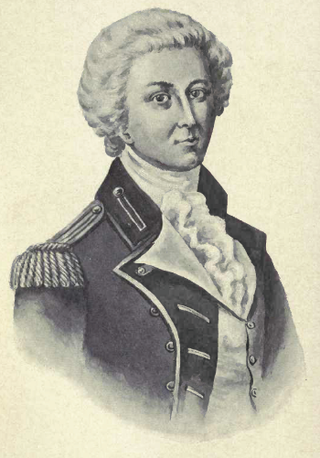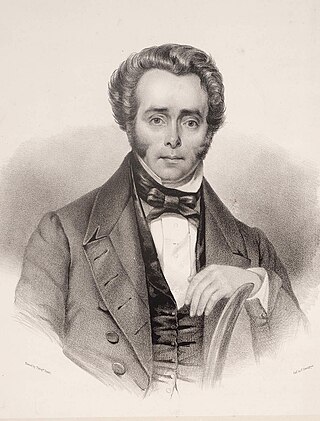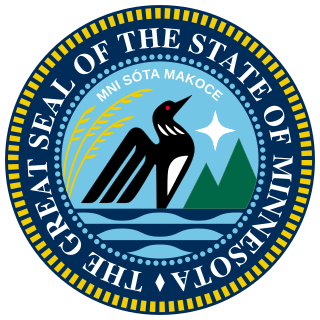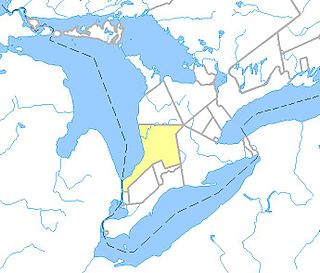
The Province of Upper Canada was a part of British Canada established in 1791 by the Kingdom of Great Britain, to govern the central third of the lands in British North America, formerly part of the Province of Quebec since 1763. Upper Canada included all of modern-day Southern Ontario and all those areas of Northern Ontario in the Pays d'en Haut which had formed part of New France, essentially the watersheds of the Ottawa River or Lakes Huron and Superior, excluding any lands within the watershed of Hudson Bay. The "upper" prefix in the name reflects its geographic position along the Great Lakes, mostly above the headwaters of the Saint Lawrence River, contrasted with Lower Canada to the northeast.

The Family Compact was a small closed group of men who exercised most of the political, economic and judicial power in Upper Canada from the 1810s to the 1840s. It was the Upper Canadian equivalent of the Château Clique in Lower Canada. It was noted for its conservatism and opposition to democracy.
Lower Canada Tories is a general name for individuals and parliamentary groups in Lower Canada, and later in the Province of Canada's division of Canada East, who supported the British connection, colonialism, and a strong colonial governor. They generally favoured assimilation of French-Canadians to British culture, laws, and the English language, and opposed democracy.
Clergy reserves were tracts of land in Upper Canada and Lower Canada reserved for the support of "Protestant clergy" by the Constitutional Act 1791. One-seventh of all surveyed Crown lands were set aside, totaling 2,395,687 acres (9,695 km2) and 934,052 acres (3,780 km2) respectively for each province, and provision was made to dedicate some of those reserved lands as glebe land in support of any parsonage or rectory that may be established by the Church of England. The provincial legislatures could vary or repeal these provisions, but royal assent could not be given before such passed bills having been laid before both houses of the British Parliament for at least thirty days.

Crown land, also known as royal domain, is a territorial area belonging to the monarch, who personifies the Crown. It is the equivalent of an entailed estate and passes with the monarchy, being inseparable from it. Today, in Commonwealth realms, crown land is considered public land and is apart from the monarch's private estate.

John Strachan was a notable figure in Upper Canada, an "elite member" of the Family Compact, and the first Anglican Bishop of Toronto. He is best known as a political bishop who held many government positions and promoted education from common schools to helping to found the University of Toronto.

Samuel Bois Smith was a Loyalist British Army officer and politician. He was appointed to the Executive Council of Upper Canada and appointed Administrator of Upper Canada.

The Legislative Assembly of Upper Canada was the elected part of the legislature for the province of Upper Canada, functioning as the lower house in the Parliament of Upper Canada. Its legislative power was subject to veto by the appointed Lieutenant Governor, Executive Council, and Legislative Council.

The Executive Council of Upper Canada had a similar function to the Cabinet in England but was not responsible to the Legislative Assembly. Members of the Executive Council were not necessarily members of the Legislative Assembly but were usually members of the Legislative Council. Members were appointed, often for life. The first five members were appointed in July 1792. The council was dissolved on 10 February 1841 when Upper Canada and Lower Canada were united into the Province of Canada. It was replaced by the Executive Council of the Province of Canada the same year.
George Herchmer Markland was a political figure in Upper Canada.
Thomas Baines (1799–1867) was born in Caynham, England, as the son of the Rev. James Johnson Baines, and came to Canada c.1821.
Gilbert McMicking was a businessman and political figure in Upper Canada. He was the son of Agness Roberson (1745–1827) and Peter McMicking (1731–1823), a United Empire Loyalist who immigrated to Upper Canada during the American Revolutionary War and settled in Stamford in 1780.
George Sherwood was a judge, lawyer and political figure in Canada West.

James Hervey Price was a Canadian attorney and political figure in Canada West. He was born and grew up in Cumberland, United Kingdom, and studied law at Doctors' Commons. He moved to Upper Canada in 1828 and became an attorney in 1833. He was appointed the city of Toronto's first city clerk in 1834 and the following year built a house north of Toronto that he named Castlefield. In 1836 he was elected as a city councillor for St. David's Ward in Toronto but was defeated the following year. Although he considered himself a Reformer, he did not participate in the Upper Canada Rebellion. In 1841 he was elected to the first Parliament of the Province of Canada, representing the 1st riding of York as a Reformer. He served as the commissioner of Crown lands from 1848 to 1851 when he was defeated in his reelection campaign for his seat in the Parliament. He withdrew from politics and worked as an attorney until his retirement in 1857. In 1860 he returned to Britain to Bath, and died in Shirley, Hampshire, in 1882.

The monarchy of Canada forms the core of each Canadian provincial jurisdiction's Westminster-style parliamentary democracy, being the foundation of the executive, legislative, and judicial branches of government in each province. The monarchy has been headed since September 8, 2022 by King Charles III who as sovereign is shared equally with both the Commonwealth realms and the Canadian federal entity. He, his consort, and other members of the Canadian royal family undertake various public and private functions across the country. He is the only member of the royal family with any constitutional role.
The Select Committee of the House of Commons on the Civil Government of Canada was established by the British House of Commons on May 2, 1828 "to enquire into the state of the civil government of Canada, as established by the Act 31 Geo. III., chap. 31, and to report their observations and opinions thereupon to the house."

The Minnesota Executive Council is the council of state of the U.S. state of Minnesota. The Executive Council is currently constituted under Chapter 9 of Minnesota Statutes and has been in continuous existence since 1925.

The Huron Tract Purchase also known as the Huron Block, registered as Crown Treaty Number 29, is a large area of land in southwestern Ontario bordering on Lake Huron to the west and Lake Erie to the east. The area spans the counties of Huron, Perth, Middlesex and present day Lambton County, Ontario in the province of Ontario.

The executive branch of the government of Puerto Rico is responsible for executing the laws of Puerto Rico, as well as causing them to be executed. Article IV of the Constitution of Puerto Rico vests the executive power on the Governor—whom by its nature forms the executive branch.

There were two types of corporations at work in the Upper Canadian economy: the legislatively chartered companies and the unregulated joint stock companies. These two business forms had different legal standing; chartered corporations had a "separate personality" - they were a legal person quite distinct from its members or shareholders, a legal fiction which protected those shareholders with limited liability. In contrast, joint stock companies were made illegal by the English Bubble Act of 1720. Joint stock companies were considered extensive partnerships under common law, and English legislation limited these to a maximum of six partners. Without incorporation, the company was not considered a "separate personality." It could not hold property; this was held by trustees, who usually had to provide a bond or security. Without incorporation, the company could neither sue nor be sued at law. And without incorporation, shareholders were personally responsible for the debts to the company to the full extent of their personal property; shareholders were not protected by limited liability. There were, then, significant legal hurdles that made the joint stock company an unwieldy form of partnership.
Wilson, Alan. (1968). The Clergy Reserves of Upper Canada: A Canadian Mortmain. Toronto: University of Toronto Press.











